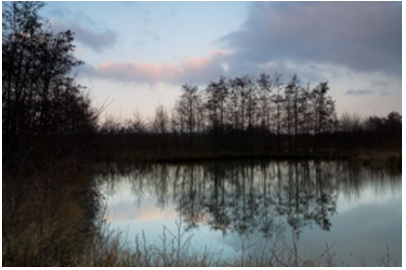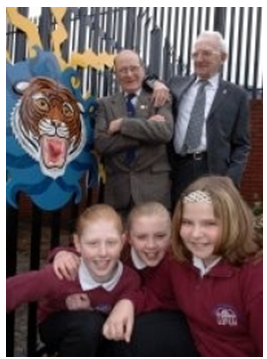외국
Old Moor Wetland
New life for Old Moor:namespace prefix = "o" />

Contributed by:Claire Johnstone
Organisation:Environment Agency
Old Moor Wetland | Barnsley, Rotherham, North East |
Publication of any case study does not imply an endorsement of its merit by the Sustainable Development Commission.
A wetland nature reserve that can ‘store’ floodwater, where local people relax, discover nature and walk in a safe setting.
Overview
The villages and towns of the Dearne Valley were coal communities and has suffered deprivation since the mines shut in 1994. The legacy of the coal years was a scarred landscape, the ground black with dust, ringed by bare, black spoil heaps.
In recent years the valley’s regeneration has got underway and part of that process has been the creation of the Old Moor wetland. Old Moor is now a Royal Society for the Protection of Birds (RSPB) nature reserve of regional importance, home to a wide range of birds and animals. There are paths to explore, a series of large hides to watch birds from and an adventure playground for youngsters. The heart of the reserve is its visitor centre, housing a popular café, a shop, facilities for school visits and meeting rooms for local businesses and organisations.
Old Moor reserve is proving a great success, attracting 55,000 visitors in 2004. Both the café and the shop operate a local sourcing policy to ensure that the reserve plays its role in creating a sustainable local economy.
Many remember the area’s mining history and comment on how dramatically the area has changed. “It used to be very industrialised,” says Mr Dearing from Rotherham. “It had one of the biggest coking plants in Europe. To get this out of it is unbelievable.” His wife agrees. “I like the walk. It makes you happy. I like shopping but I’d rather have this!”.
Our survey found that nine out of 10 Old Moor visitors felt that visiting the reserve increased their feeling of wellbeing, while close to half saw their visit as an opportunity to take some exercise. 90% felt de-stressed after visiting. For the Barnsley Primary Care Trust and Healthy Living Centre, Old Moor is the ideal venue for getting people on the path to better physical health. They use the 2km walk to get people more active and to help tackle a range of health problems. Half of visitors now make six times as many visits per month than before, leading to an increase in physical activity.
RSPB figures show that the spending power of visitors to Old Moor benefits the local economy. The site employs 17 full time workers, most of whom are local. This in turn supports other jobs in the local economy. 40 to 50 people work on site as volunteers, making it a valuable resource for learning new skills and getting people back into the jobs market.
Key features
biodiversity initiatives
education
health
land use
regeneration
water
Key data
Completion Date: 01/10/2004
Project Team: Environment Agency, Royal Society for the Protection of Birds, Barnsley Metropolitan Borough Council, Yorkshire Forward the Heritage Lottery Fund, Waste Recycling Environmental Group, the Department for the Environment, Food and Rural Affairs, Englis
Local Authority: Barnsley Metropolitan Borough Council
Green Spaces – The Secret Ingredient
For Community Spirit

Tiger’s Bay reveal a new community garden and artwork. Some young people from the area designed an art panel, attached to the railings surrounding an NIE electric box, as a warning for young people to stay away. Pictured from left to right are Emma
Contributed by:Mariam Saleemi
Organisation:SustainableDevelopment Commission
Green Spaces – The Secret Ingredient For Community Spirit | Belfast, Northern Ireland |
Publication of any case study does not imply an endorsement of its merit by the Sustainable Development Commission.
Residents from some of Belfast’s most deprived areas have been the drivers of successful and innovative programmes which have cleaned up their neighbourhoods, making them much more pleasant places to live.
Overview
Residents from some of Belfast’s most deprived areas have been the drivers of successful and innovative programmes which have cleaned up their neighbourhoods, making them much more pleasant places to live. The Greencare environmental improvement scheme has worked with communities from Mount Vernon and Inverary to Ligoniel and New Lodge and helped them regenerate their environment and improve their image.
Greencare was an exciting partnership between Belfast City Council, the Northern Ireland Housing Executive and Groundwork Northern Ireland. It encouraged local people of all ages across nationalist and unionist areas to discuss the non-violent aspects of the area’s history and to work together on practical environmental projects to improve their estates.
Community involvement is at the heart of Greencare’s work, were local people are viewed as best placed to find local solutions to the local problems.
From 1999 to 2003 Greencare ran two initiatives, the initial Greencare I ran from 1999 to 2001 and engaged with four inner city communities in Belfast; Mount Vernon, New Lodge, Sandy Row and the Markets. Greencare II started in July 2001 and finished in June 2003 and worked alongside communities in Inverary, Turf Lodge, Tigers Bay and Ligoniel. In that time residents of all ages have been involved in projects including murals, planting schemes, clean-up events, community gardens, multipurpose sports facilities and play facilities.
The Ligoniel Improvement Association wanted an attractive and welcoming entrance for visitors to the village. A series of Design Workshops were held with pupils from St Vincent de Paul Primary School, who were asked to enter a design competition based on images that reflected the natural beauty of the local environment as well as the interesting history and cultural background of Ligoniel.
The winning designs, which reflect themes ranging from the Belfast Hills, a waterfall, a river, a fish, trees, an old mill and a wolf, will take pride of place on the new entrance feature. The Wolf on the feature is of particular significance as legend has it that the last sighting of a wolf in Ireland was in Ligoniel.
Inverary residents ran a series of projects from designing a community garden to holding planting days. The children designed a recycle, reuse, renew mural for the area, had recycling facilities put in the area and also designed a stained glass mural for Inverary Community Centre out of recycled glass. Residents in the Tiger’s Bay area helped a local artist design a standing stone for a community garden, organised play areas and built seating projects for areas formerly used by joy riders.
The Mount Vernon Environmental Group established a number of projects ranging from redesigning political graffiti into designs with no paramilitary messages to transforming the derelict ‘mucky field’ at the heart of the estate into a community garden by the Mount Vernon Environmental group.
The New Lodge community successfully established the Lancaster Street project, resulting in a community seating area and Sandy Row and The Markets implemented a number of small-scale environmental improvements in their areas
Mel Waddell from Groundwork NI explained the background of the Greencare project:
“Through Greencare we want to make a positive difference to the environment and this can only be achieved and sustained by working in partnership with local people at a local level.”
While originally focusing on environmental improvements, Groundwork has been working to develop links between environmental regeneration and key issues such as community safety, community cohesion, developing community capacity and participation and building sustainable communities through environmental action.
The redesign and improvement of public spaces, especially in deprived area, is a powerful tool for bringing communities together. The focus on a shared and non-contentious process has had enormous benefits especially for eight estates in Belfast. In republican areas sectarian murals have been replaced by pictures of cartoon characters while in loyalist areas red, white and blue kerb markings have disappeared. These small changes have symbolic significance.
Local environmental action is an essential element for transforming the social and economic prospects of the most deprived areas. Groundwork NI quietly continues to help communities gain the tools they need to transform and maintain the areas in which they live and deliver innovative solutions to the problems of long-term neglect for some of Northern Ireland’s most disenfranchised people.
Key features
land use
regeneration
Key data
Local Authority:
게시물수정
게시물 수정을 위해 비밀번호를 입력해주세요.
댓글삭제게시물삭제
게시물 삭제를 위해 비밀번호를 입력해주세요.






